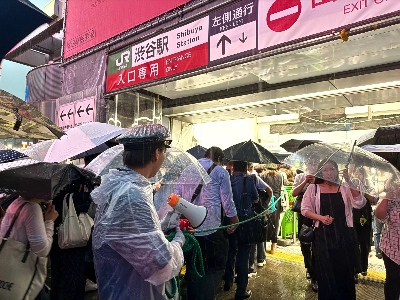The recent decision by the Liberal Democratic Party-Komeito ruling coalition on the route for extending the Hokuriku Shinkansen superexpress train service that will eventually connect Tokyo and Osaka via the Sea of Japan coast — with the final section to be completed three decades from now at the earliest at an expense of more than ¥2 trillion — should be flexibly reviewed by comparing its benefits, cost advantage and environmental impact against alternate plans.
After the 222-km Tokyo-Nagano section of the Hokuriku Shinkansen Line opened in 1997, its 228-km Nagano-Kanazawa section began operations in March 2015, with the fastest service linking Tokyo and the capital of Ishikawa Prefecture in two hours and 28 minutes. Currently, the 125-km section from Kanazawa to Tsuruga, Fukui Prefecture, is under construction and scheduled to go into service in 2023.
The decision last week concerned choosing the route linking Tsuruga with Shin-Osaka via Kyoto out of three options. One runs from Tsuruga to Maibara, Shiga Prefecture, where it will connect to the existing Tokaido Shinkansen Line. The second route reaches Kyoto and Shin-Osaka via Obama, a Fukui city on the Sea of Japan coast. The third goes by way of Obama and Maizuru, Kyoto Prefecture. Both the second and third routes envisaged building a new bullet-train line linking Kyoto and Shin-Osaka stations. The coalition team picked the Obama route, although it left the decision on where the new section from Kyoto to Shin-Osaka will run — either south or north of the Tokaido Shinkansen Line — till the end of March.


















With your current subscription plan you can comment on stories. However, before writing your first comment, please create a display name in the Profile section of your subscriber account page.